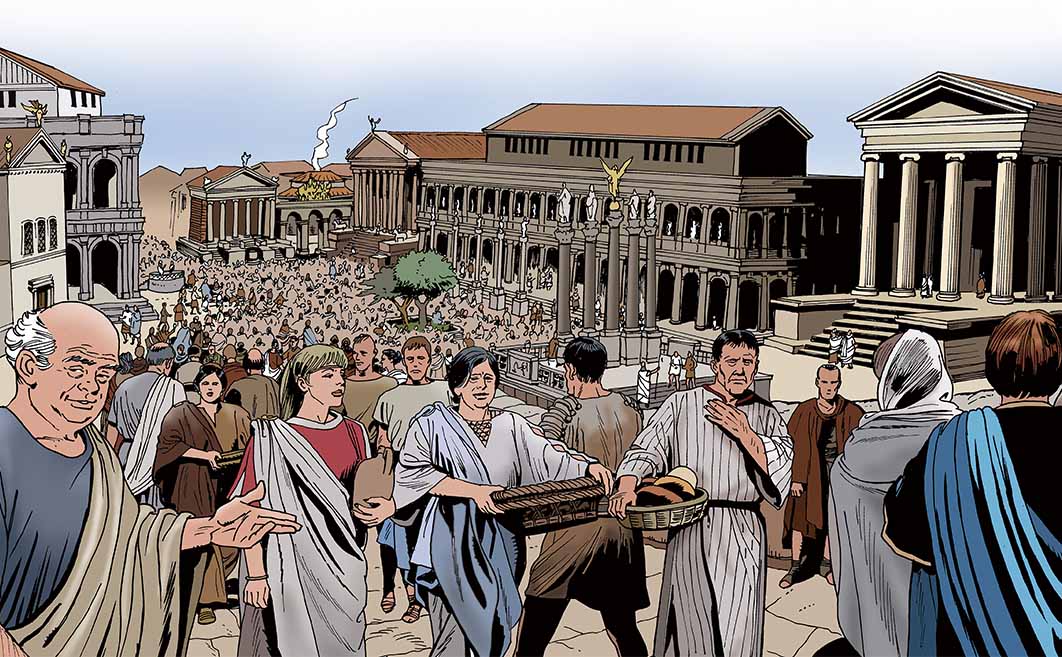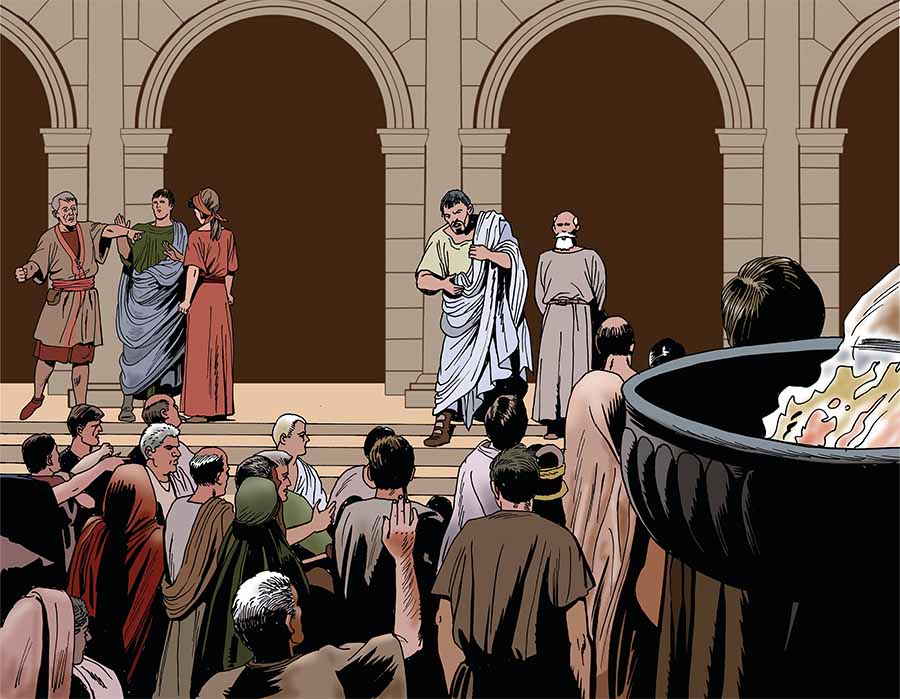
Strolling Through Augustan Rome With Roberto The Roman
Like many ancient cities, and some modern, Augustan Rome was a combination of public magnificence and private squalor. There were the temples, the aqueducts, the basilicas, and other grandiose public buildings, and there were the seedy back streets, the dilapidated tenements, and the piles of odiferous waste. Augustus’ biographer Suetonius claims the emperor remarked, “I found a city of brick and left it a city of marble.” But if he did utter those immortal words, this is certainly an exaggeration. It is true that he restored numerous temples that had fallen into disrepair during the Civil War era and that he undertook several high-profile vanity projects, but bricks remained the chief building material. Speaking of temples, they were what would have awed visitors most when they first entered the city. There were over a dozen dedicated to Jupiter alone.
Overcrowding, Traffic Jams and Bodyguards
By the time Augustus became princeps or ‘first citizen’, as he chose to be called, in 27 BC, Rome was heavily overpopulated, and if he is to be given credit for transforming the city, which he should, it is for facilitating a building bonanza to increase housing. A vague estimate of Rome’s population at the time may well be hovering around one million. It is hard to imagine close to one million people crammed inside a circuit wall which barely encloses three square miles (7.7 square kilometers).

Wealthy woman being transported in a litter through the overcrowded streets of Rome. ( Massimo Todaro/ Adobe Stock)
Rome was not built on a grid pattern. The historian Livy said that it was constructed in a hurry – if not exactly in a day – after its predecessor had been razed to the ground by the invading Gauls in 390 BC and that it resembled a city “casually built by squatters rather than one that had been carefully planned.” Few of the streets were straight and few were wide enough to allow two carts to pass in opposite directions. Daytime snarl-ups were all-too-frequent, despite the efforts of the local authorities to regulate the traffic flow. It was a wonder that the whole place did not grind to a halt. To cut down on the congestion, Julius Caesar introduced a law permitting wheeled vehicles into the city only after sunset, though if they were carrying construction materials, they were exempted. Caesar’s ban on daytime wheeled traffic meant inhabitants were forced to listen to carts trundling over cobbled streets incessantly at night. One of the reasons why the houses of the well-to-do were fronted by shops was to drown out the noise and provide an illusion of peace for their privileged owners. Augustus had divided the city into 14 districts, each administered by elected local magistrates.

Due to cutthroats and criminal gangs, the well-to-do had bodyguards when they ventured out at night (Massimo Todaro/ Adobe Stock)
Women were advised not to go about unaccompanied. Rome could be pretty violent. An altercation outside the city between rival bands of thugs, resulted in the death of a prominent politician called Clodius. His supporters carried his body into the Curia or Senate House, set light to it, and burned the building down. Julius Caesar planned its successor and Augustus brought this project to completion. The shadow of Julius Caesar hovered everywhere over Augustan Rome. Venturing out at night was so dangerous, the well-to-do were accompanied by armed bodyguards.
Uptown Rome
All this said, Augustan Rome was the most fascinating city on the entire orbis terrarum or planet. Its closest rivals were Antioch in modern-day Turkey and Alexandria in Egypt. At the Forum Romanum, (Roman Forum) religion, law, commerce, and politics intersected. It was also where well-to-do Romans converged simply to gossip, chew the cud, or do business deals. Triumphal processions used to end up here, but after holding a triple triumph, Augustus permitted only his potential successors to celebrate a military victory in this way. Magistrates delivered speeches from the Rostra or speaker’s platform, so named because bronze prows or rostra of captured enemy vessels were riveted to the front of the platform. It was here that Mark Antony delivered his funeral oration on behalf of Julius Caesar, which turned the tide of sympathy against his assassins. In Augustus’ reign, the most recent addition to the Forum was the Temple of the Deified Julius Caesar, erected over the spot where the rioting crowd got out of control and cremated his body.





